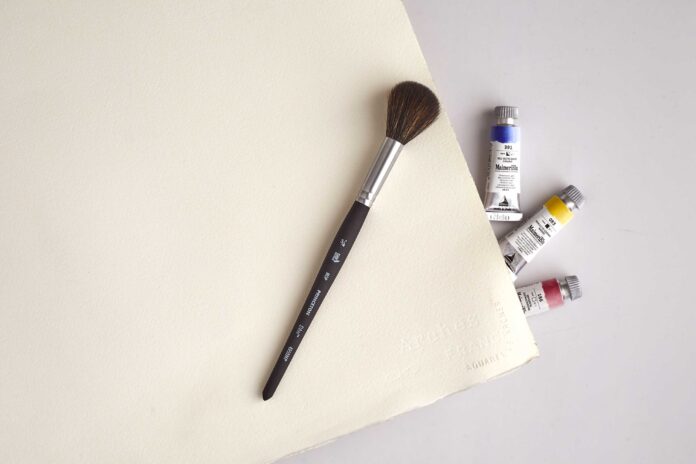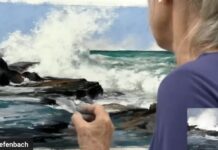The following is part of a series featuring a leader in the art community who will be joining us on the faculty of Watercolor Live, a virtual art conference taking place January 24-26, 2024.
Understanding Watercolor Paper
by Dwight Rose
Papers for watercolor affect how the paint behaves as it is applied, and how it looks when it is dry. Watercolors are designed to be thinned out with varying amounts of water and to be applied to the paper in a manner that allows light to react through the color, once dry. This reflectivity from the paper surface is what gives watercolors their unique luminosity.
Paper surfaces influence this reflectivity. There are three basic surfaces for watercolor paper: rough, cold press, and hot press. I use the Arches brand of papers which are available in two different shades of white, one being a “natural white” and the other being a bright white.
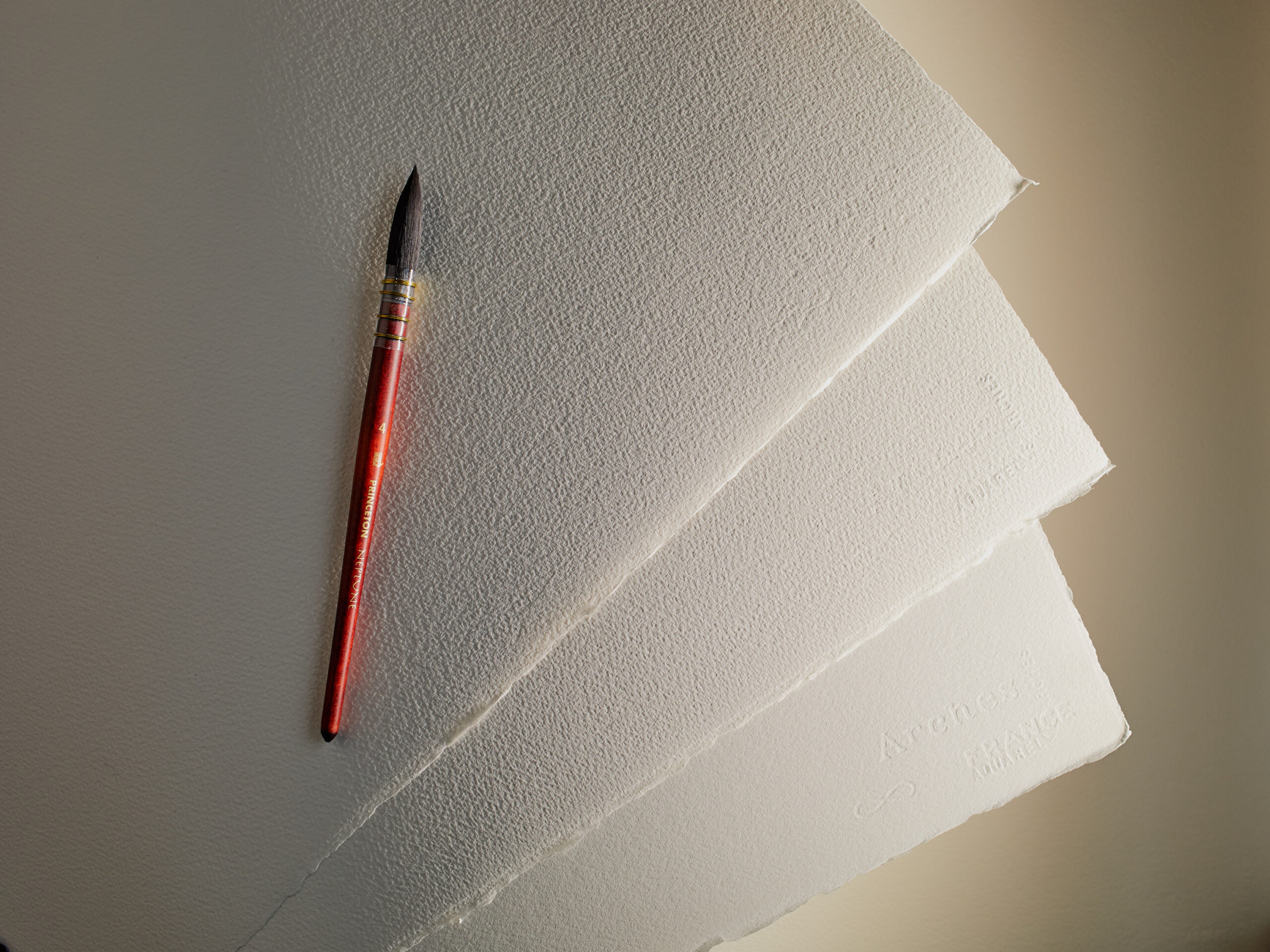
Middle: Cold-pressed
Bottom: Hot-pressed
I have traditionally used the Arches 140lb cold press, which is a medium textured paper. Some watercolor paper manufacturers have added a third surface, not press, which is somewhere between cold press and hot press. Visualize your paper on a scale from bumpy to smooth and over time you will find what works best for you.
A rough surface is particularly suited to direct painting, where color is put down once and not reworked, or for using the heavier pigments (cadmiums, cobalts, etc.) as it accentuates their sedimentary qualities.
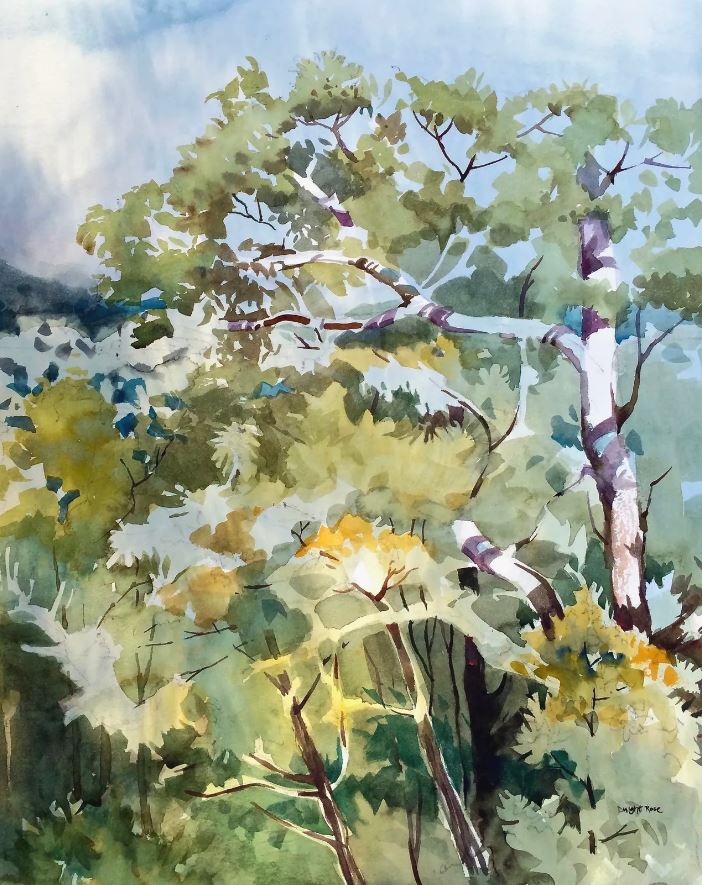
The hot press surface is a very smooth paper, which allows the paint to “slide around” on the paper more, and will tend to record each brush mark you make…leaving unpredictable accumulations of paint. It can be a very expressive surface in the hands of an experienced direct painter. For beginners, it can present real challenges for painting smooth, non-streaky areas. It is a good paper surface for dry brush or highly detailed approaches to watercolor.
Cold press paper is a good, all-around paper surface, as it has enough “bumpiness” to take advantage of sedimentary pigments when you use them, but is smooth enough for detail work.
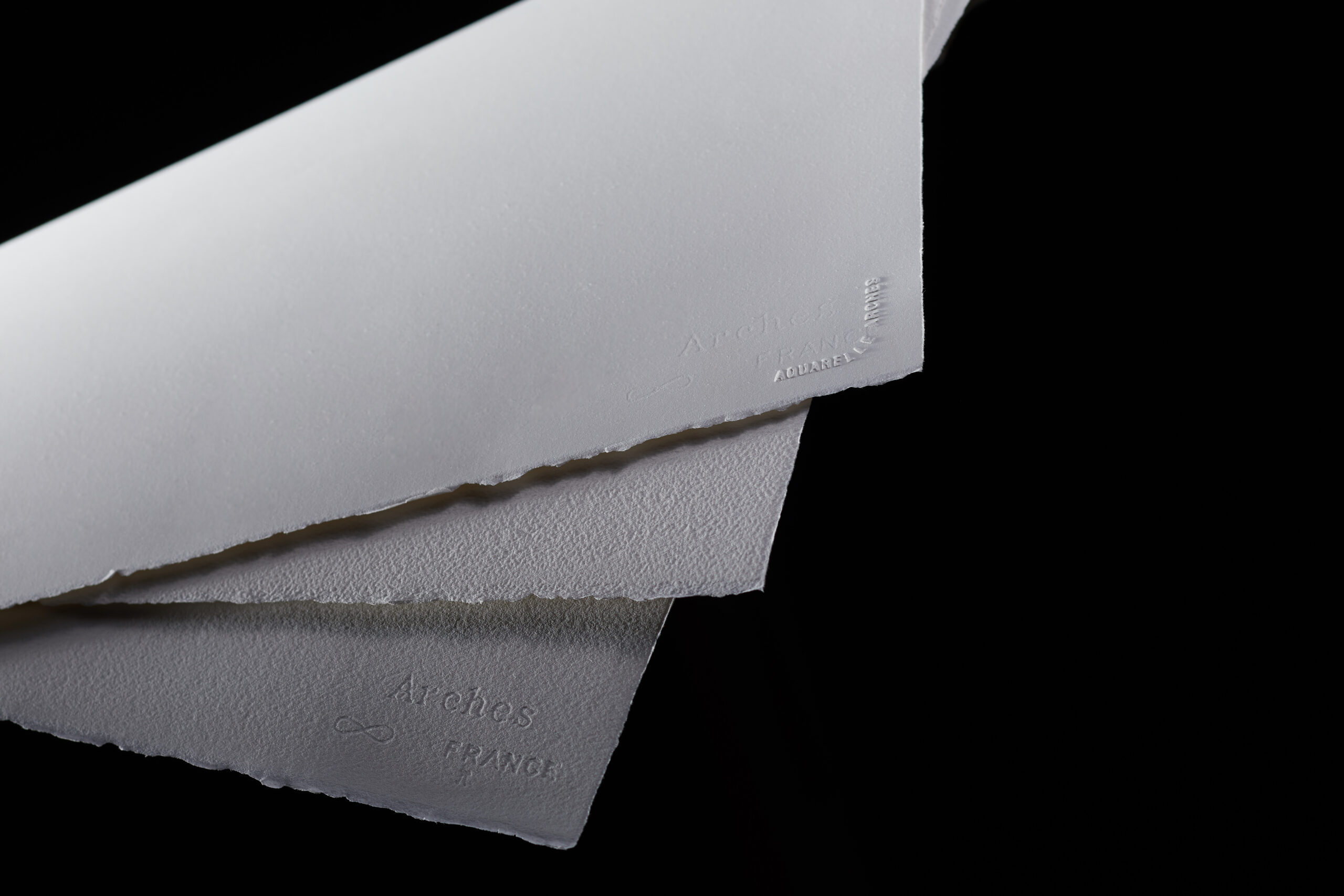
Middle: Rough
Bottom: Cold-pressed
The other thing that affects reflectivity is sizing. This is an organic or inorganic gelatinous glue-like solution that’s added during the pulp stage of the paper making. The amount and type of sizing determines how absorbent the paper will be, how easy it will be to lift off (remove) dry paint, and ultimately, how luminous the color will appear. All good watercolor paper is sized.
One main benefit of sizing is the less absorbent the paper is, the more the paint sits on the surface and the brighter it will appear. The downside to paint sitting on the surface comes when you want to glaze or layer over it…as watercolor is always resoluble. Paint that sits completely on the surface is very easily disturbed and blended into subsequent washes, sometimes making a muddy mess!
Watercolor paper comes in rolls, pads, blocks, and sheets in various sizes. The Arches 140lb sheet is my paper of choice. The bonus is this paper comes with a deckled edge for potentially floating my finished piece in a frame. It’s important to take the time to find the paper surface, through experimentation, that suits your painting style.
Helpful Links
- Connect with Dwight Rose through his website
- Learn from Dwight Rose during the 4th Annual Watercolor Live online art conference, January 24-26, 2024
- Browse watercolor papers at Arches-Papers.com

